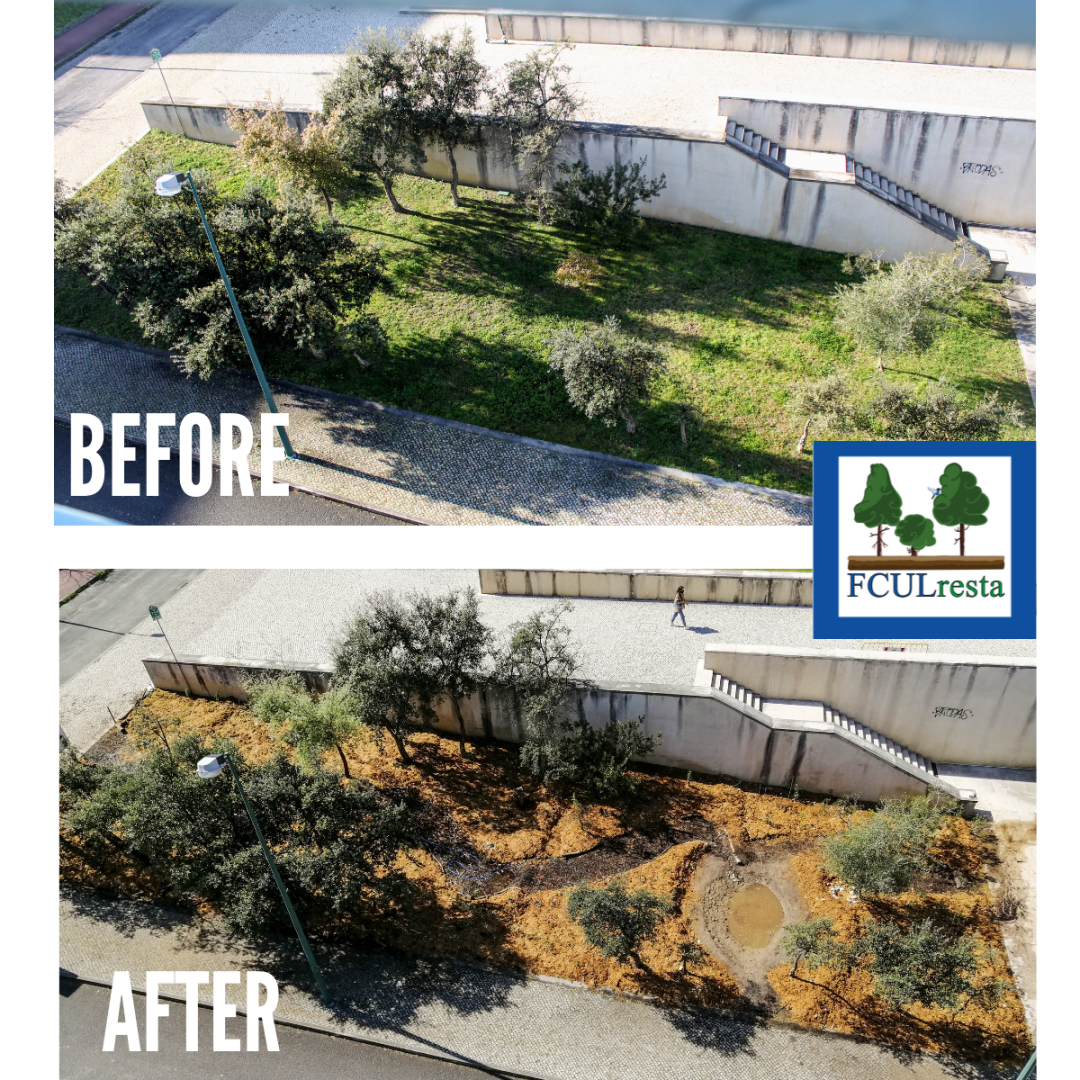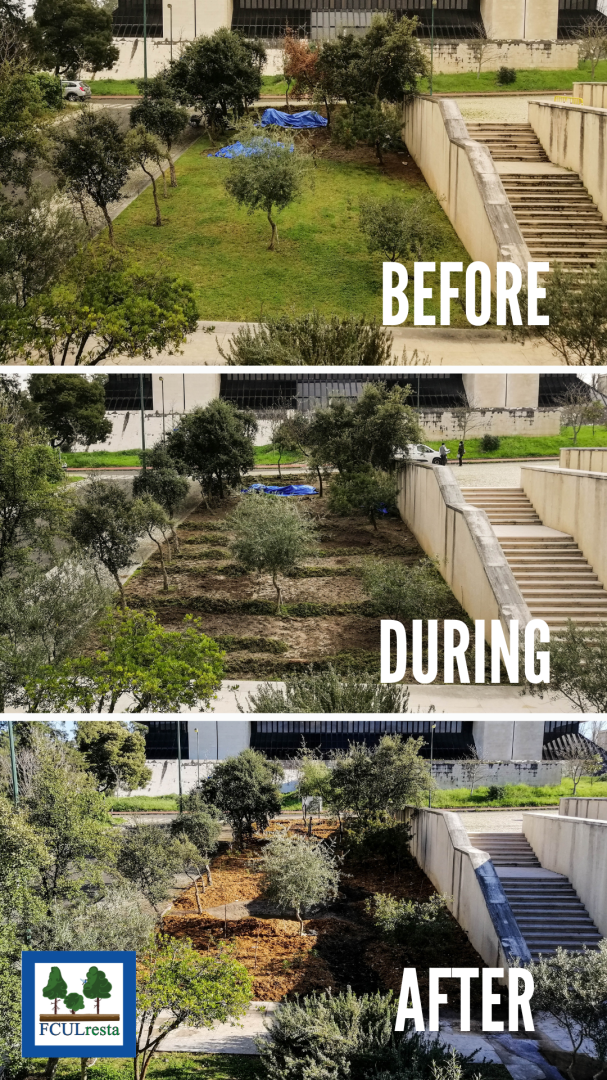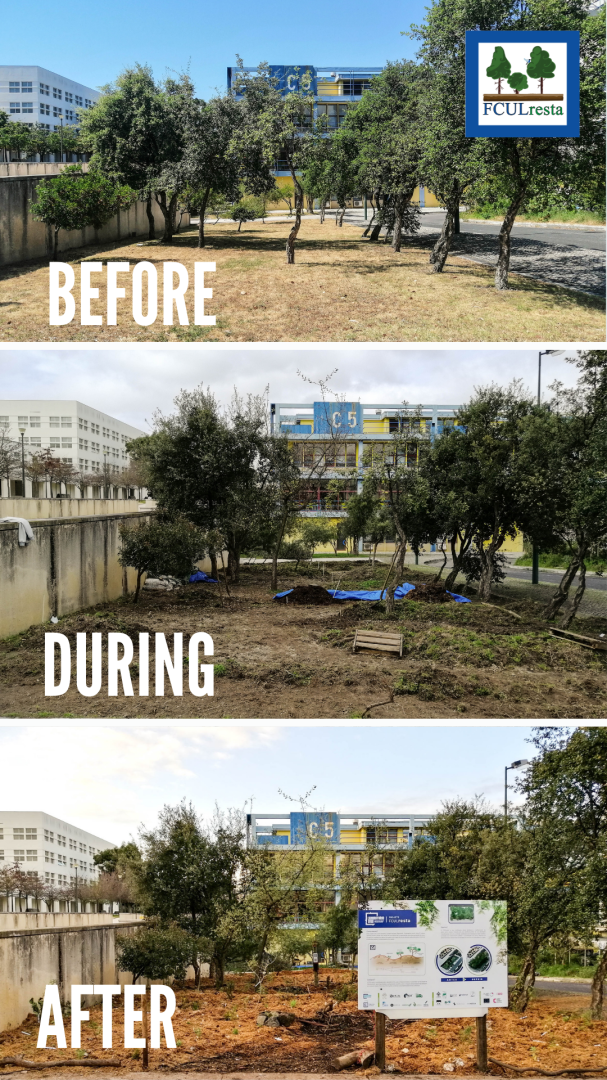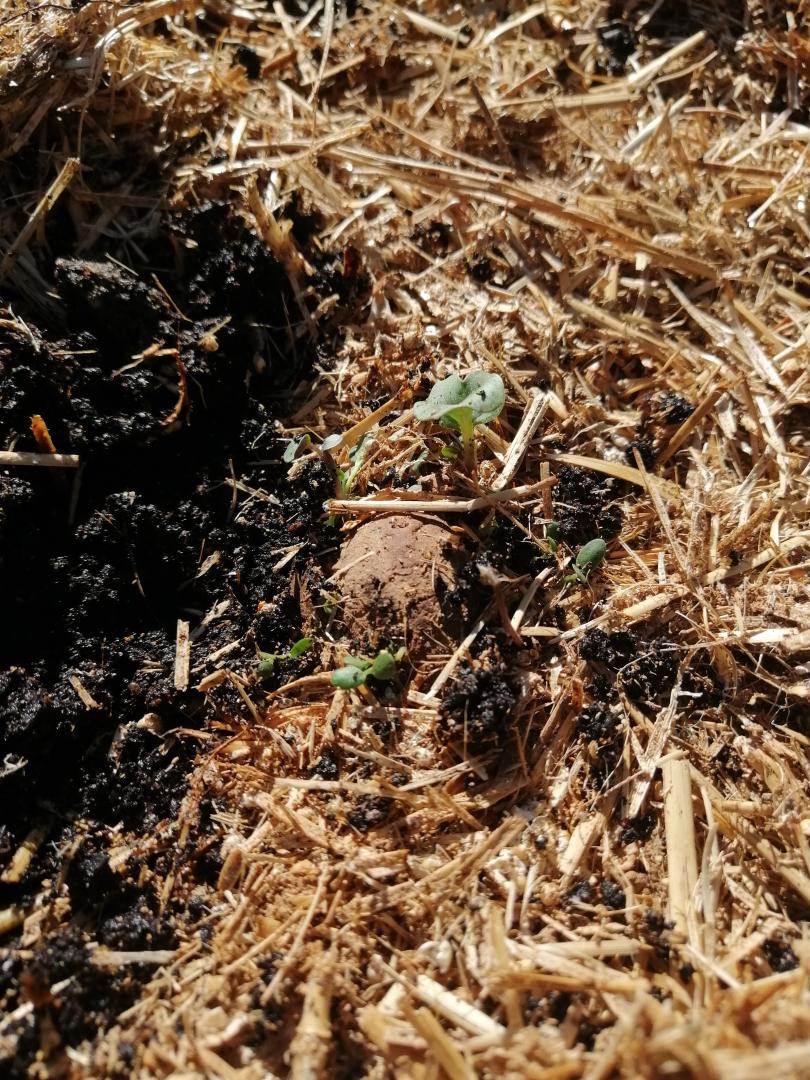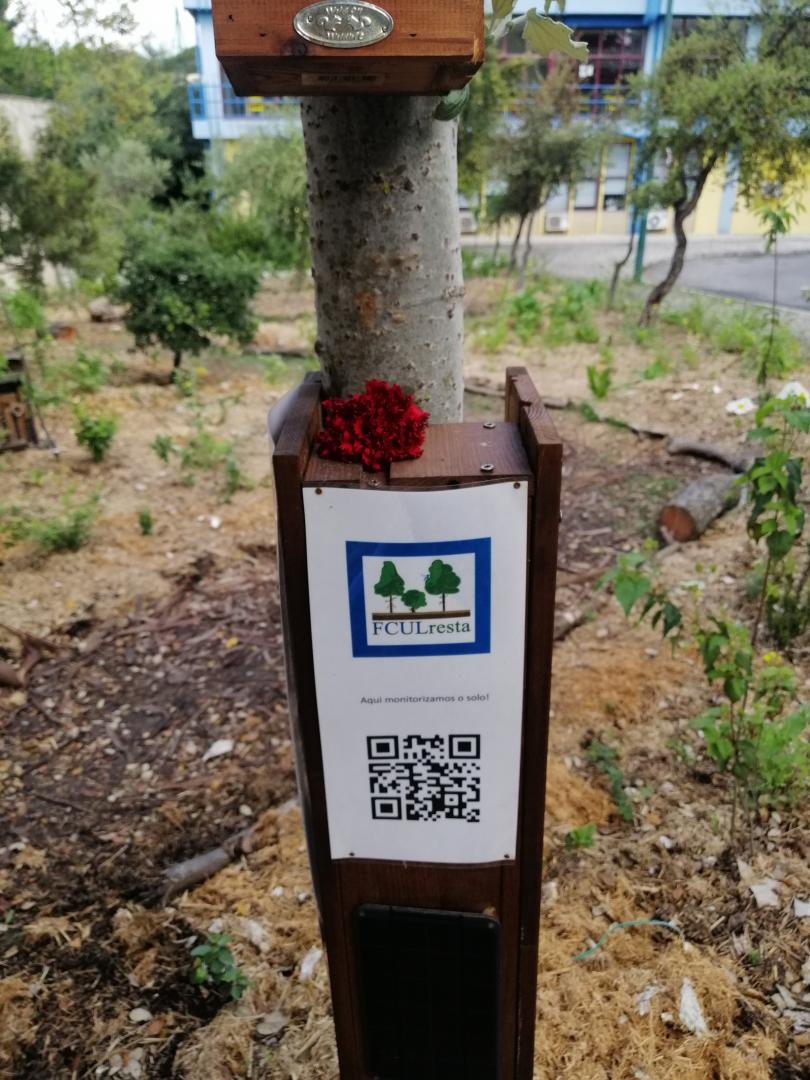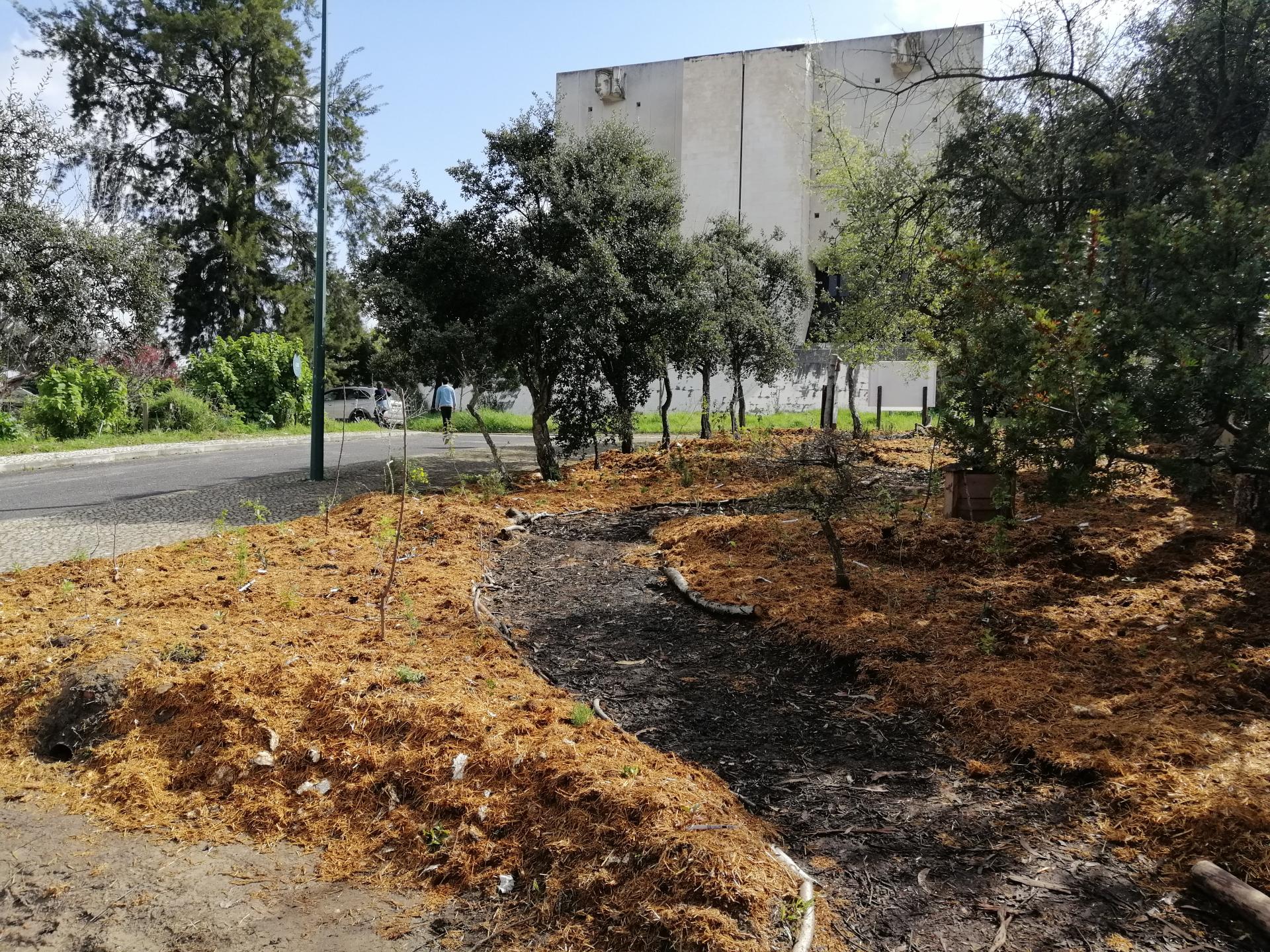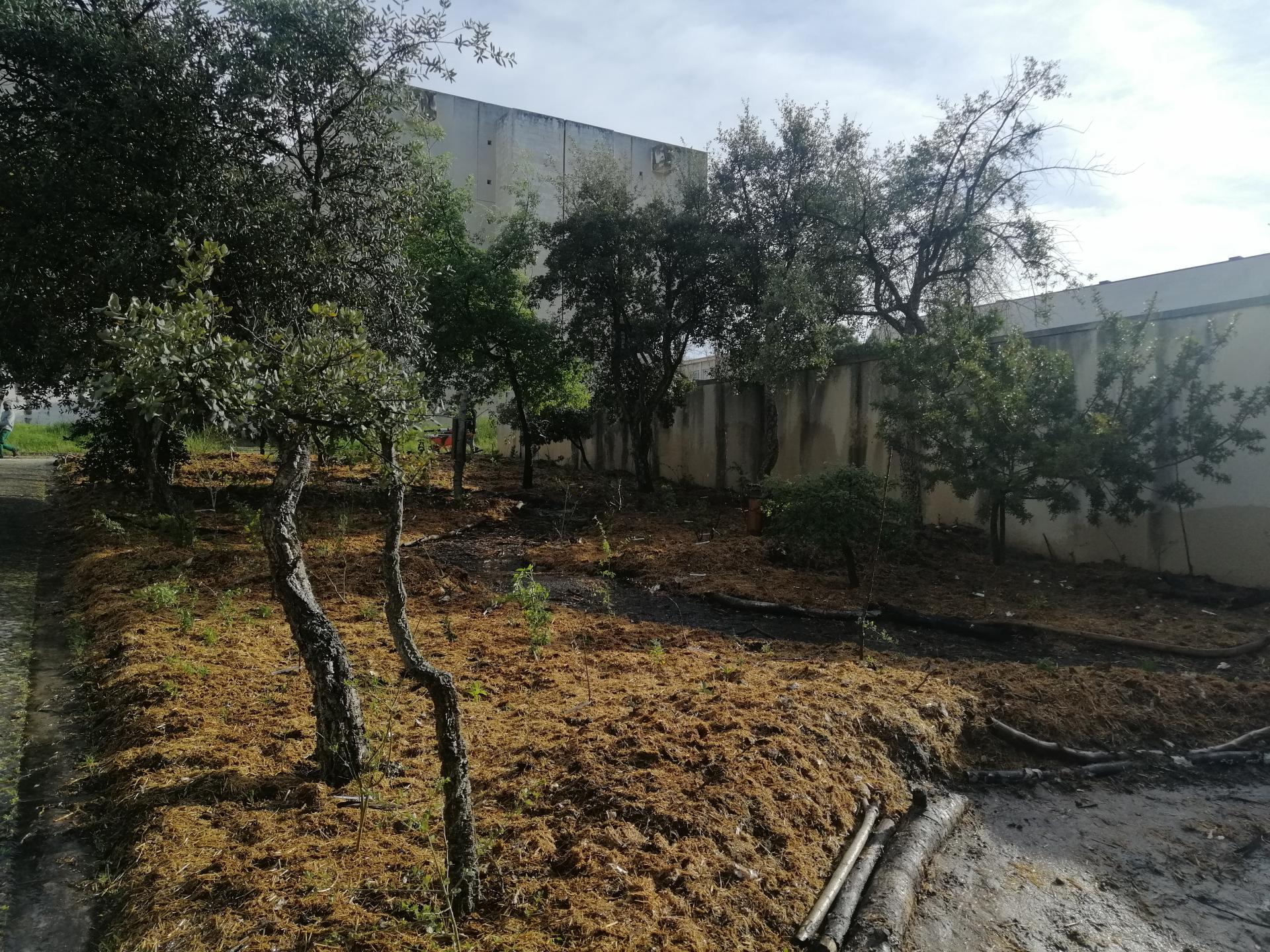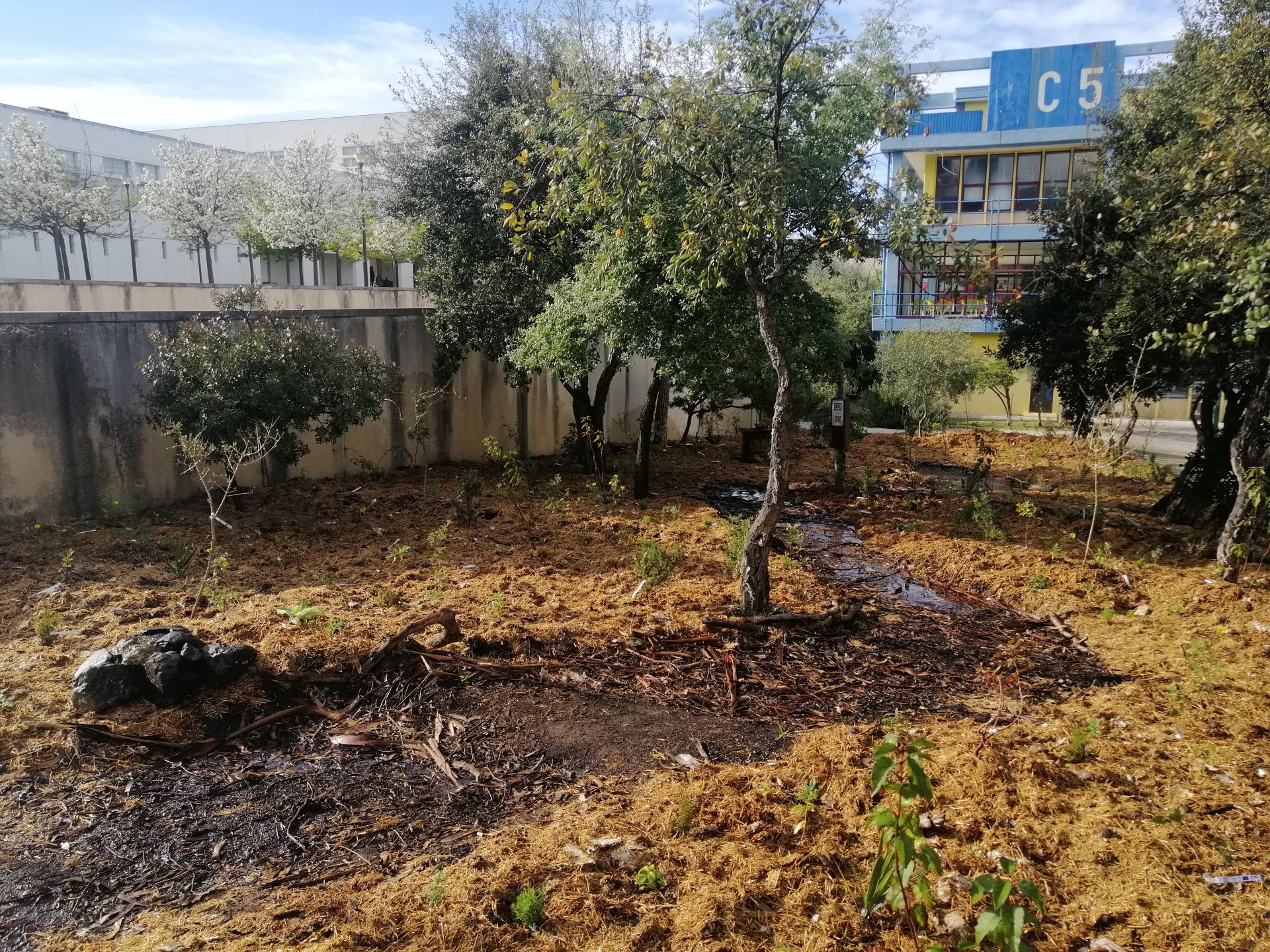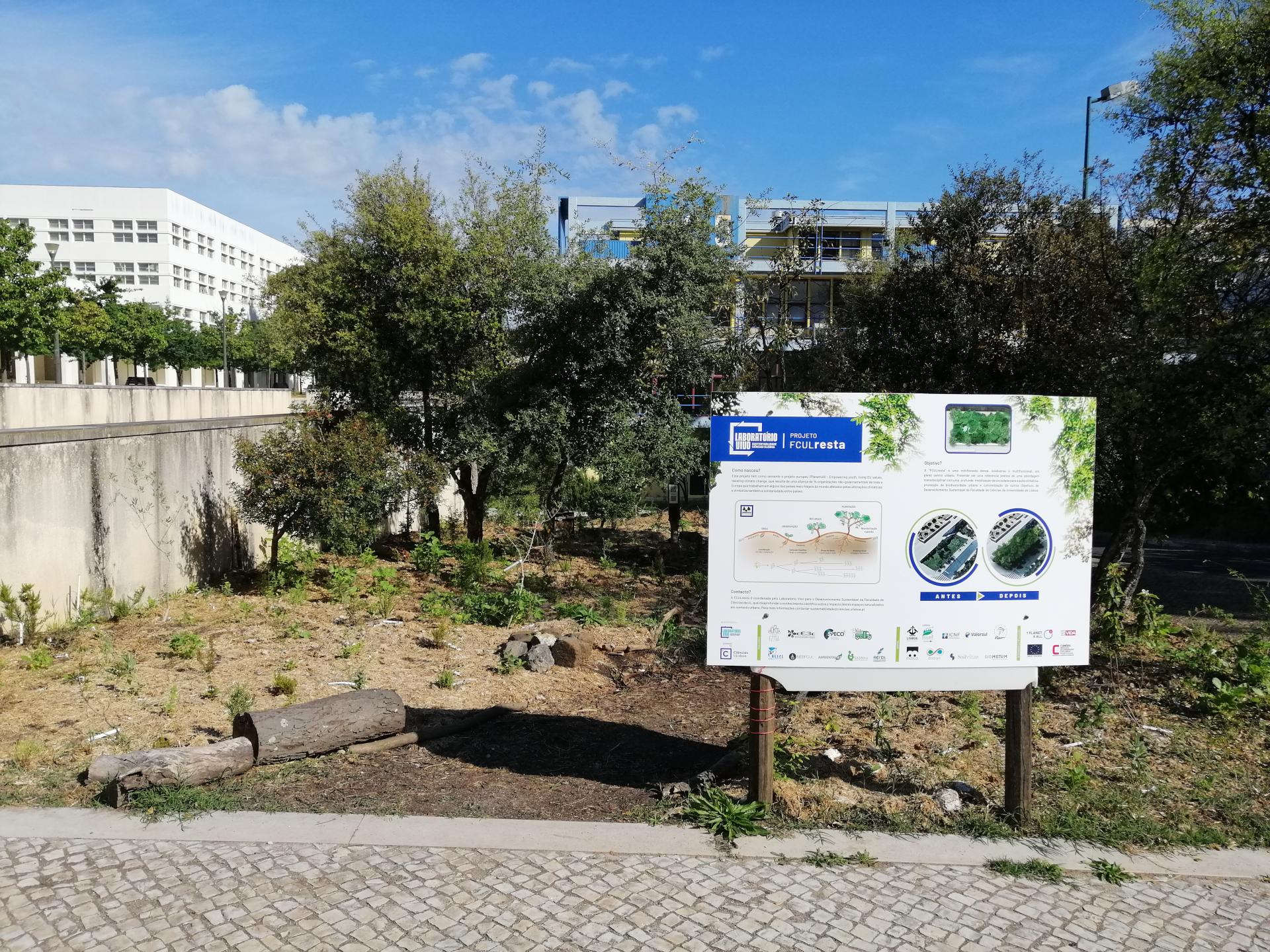FCULresta - an urban biodiversity bomb
Basic information
Project Title
Full project title
Category
Project Description
Welcome to FCULresta! FCULresta is a tiny, dense, biodiverse and multifunctional forest created in an urban context. It aims to become a hands-on reference on a transdisciplinary approach, with a profound mobilization of society towards climate action, enhancement of urban biodiversity and other Sustainable Development Goals of the Faculty of Sciences of the University of Lisbon (Ciências ULisboa) and its city as the Green Capital of Europe 2020.
Project Region
EU Programme or fund
Description of the project
Summary
FCULresta is a tiny, dense, biodiverse and multifunctional forest created and nurtured in an urban context. It aims to become a hands-on reference on a transdisciplinary approach, with a profound mobilization of society towards climate action, enhancement of urban biodiversity and other Sustainable Development Goals of the Faculty of Sciences of the University of Lisbon (Ciências ULisboa) and its city as the Green Capital of Europe 2020. It will also act as a case study to evaluate the potential of the Miyawaki Method on climate action in the Mediterranean and other ecosystem services in the urban context, through different research questions that aim to look at the project as a whole.
FCULresta was inspired by the emerging movement across Europe of Tiny Forests, these small and biodiverse urban forests in countries like the Netherlands or England. However, through the co-creation process and the knowledge and experience accumulated, we believe that we came up with adaptations that can improve even further, not only the method, but its sustainability, functionality and aesthetics, something that we explore further bellow.
The creation of FCULresta was a success on the inclusion of people and local resources: 23 local partners, 150 participants across five consecutive days divided by shifts to implement the forest - for a grand total of 250 people involved - 30 cubic meters of local composted food waste, 300 bags of mycelium and straw to use as mulch - waste collected from a local mushroom growing company - and 660 plants from different strata and two different climate regions - temperate-atlantic and temperate-mediterrenean - from local nurseries.
Even tough implemented during the COVID-19 pandemic, it is important to state that the strict health measurements implemented and a solid organization of the project managed to report 0 cases of COVID-19 from the beginning of its implementation to one month afterwards.
Key objectives for sustainability
1. Co-creation process and holistic management - to make sure the project thrives "ad eternum", 7 of the 9 months necessary to dream and implement FCULresta were used in community engagement and co-creation of the space, both with a multidisciplinary scientific commission designed for the project, students from Bachelors to Phds and specialists from different areas. This will continue post-implementation in order to ensure the biggest network around the project as possible.
2. Technology - using water availability sensors, we can remotely sense the humidity and temperature of the forest’s soil (http://2adapt.pt/fculresta/). This allows for a more fine-tuned watering, promoting water on the soil's deeper layers, also contributing to combat invasive weeds.
3. Management for the first 2 years - overseeing of the forest for the first two years with watering, littering, finding and solving problems, as well as connecting with people that visit the forest and look for synergies.
4. Academic work - through the research work being carried out throughout the years in the FCULresta, this will foment the need for caring and observing of the space.
5. Promoting circular economy - by establishing partnerships with different entities, we managed to acquire all key resources at zero cost. These partnerships continue to this day, now by engaging with the public and connecting them with the project.
6. Strong scientific component - by evaluating the Miyawaki method in Lisbon's climate, we can deepen our understanding of the function these naturalized areas can have in an urban environment, also strengthening the bonds between the scientific community who inhabits Ciências ULisboa, by working on a multidisciplinary project.
7. Community engagement - by bringing people and Nature closer together, through the aesthetics and the ecosystem services provided by the project but also from a scientifical and engaging work with FCULresta.
Key objectives for aesthetics and quality
In terms of quality of experience:
1. Promote contact with Nature - bring Nature to the cities and to the people, thus preventing Nature Deficit Disorder and contributing to a better well-being. To accomplish this we'll maximize biodiversity, with a high abundance and diversity of native plants and niches, the basis for all fauna. To meet these goals we are going to leave Nature take its course, observe and interact when strictly necessary.
2. Connection between plant and person - on the creation of FCULresta, each participant planted, identified and wrote, on a small tag, its name or a simple message. This guarantees that that person, whenever they come to FCULresta, can know how their plant is doing. As the space is and will continue to be open to the public, this presents itself as a unique system in an urban area which's evolution can be accompanied throughout the years by each visitor.
3. A different feel within FCULresta – one of its ecosystem services is regulating the abiotic conditions by working as a buffer for temperature, smell and noise within the small forest.
In terms of aesthetics:
1. Design of FCULresta - we took inspiration on Nature with an organic but at the same time functional design creating a pathway and swales designed to keep water inside the forest and to allow a smooth visit through FCULresta.
2. Value and multifunctionality of a temporary pond - temporary ponds are a natural feature exclusive to the Mediterranean area. The one built in FCULresta not only is able to retain water and host specific species of flora and fauna but can also function as an amphitheater, a place for classes or social gatherings, when dry.
3. Forever changing living construction - many of the species planted will take decades to reach a mature form, thus the shape of the forest will change greatly overtime, being possible to observe a natural masterpiece being sculpted across time.
Key objectives for inclusion
Scientific Commission - the panel of experts designed for the project aims at not only bringing expertise but also to contribute to the inclusion of different scientific domains, with different students and research questions.
Local partnerships - we created a network with different local companies, NGOs, including the Municipality, to decrease costs (extremely relevant in order to replicate it as maximum as possible) and foster synergies (essential to mimic the natural pattern of emergent proprieties).
Support group - we work with a group of 50 students from ages 18 to 30 from five different universities and NGOs that the team is training to deal with Climate Action. FCULresta was the “screen” we used to teach how to build and shape something like this from scratch, so that they are now able to create their own small forests.
Participants - we had 150 participants across 5 days, spread by morning and afternoon shifts and registered 0 cases of COVID-19 demonstrating that is possible to take care of both the Earth’s and people’s health. Each participant had the opportunity to build a section of FCULresta from scratch, - design, soil, mulching, planting and seed-bombs - thus learning how to create something like this.
Visitors - all visitors are greeted by an informative panel at the entrance, explaining the project and some information about the different elements spread in the space, like an interactive device that allow people to receive real time data about water availability via QRcode with your phone.
Open source - all of our methodology as well as all the resources and partnerships are available publicly, as our true purpose is to inspire, motivate and empower people to bring more nature into our cities.
Networking - the creation of FCULresta motivated others to start something like FCULresta, as we are now trying to develop a network of these future small forests of Lisbon, ensuring mutual resilience and more scientific knowledge.
Innovative character
1. A tiny forest with giant participation – planting a successful, co-designed and complete forest, i.e., going through all the phases from soil works, soil improvements, mulching, planting, seedling, plant identification, animals refuges construction in 5 days with 150 students during the pandemic confinement was, in the promoters perspective, very innovative.
2. Water retention design - due to the fact that FCULresta is not on a plain field, we created a design that integrates elements such as 7 swales, a pound, 10 retention areas with high amounts of soil organic matter all connected to the pathway, to promote the biggest retention of water possible in the area, thus adapted to the extremes of climate change, both droughts (due to it low irrigation requirements) and floods (design to retain the 100 year worst rainfall, in this case, 119mm in 24hours).
3. Seedballs - the use of these small balls made of compost and clay mixed with different seeds, a technic that we used on FCULresta but haven't observed in other forests of this kind, was able to promote the lower (herbaceous) layer of the forest, something that proved very useful to attract insects, have short terms results (2months after planting, there was a field of flowers) and create dynamics with the remaining plants.
4. Making use of the grass removed - we utilized the biomass of the area such as grass and roots - usually removed to the outside of the area as a residue - to transform it by fast composting into a rich compost with a mix of manure and woodchips from local businesses within 14 days - used to mix with other compost to activate its properties maximize the microbial and bacterial life of the soil.
5. Create the person-plant link – during the plantation each person was invited to label the tree with the person’s name. This acknowledged the connections between the tree and the person that have created the nest for this plant to thrive and grow side by side.

